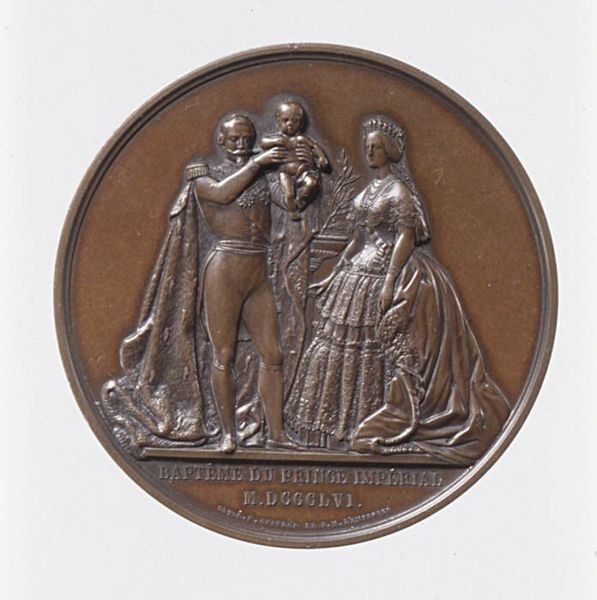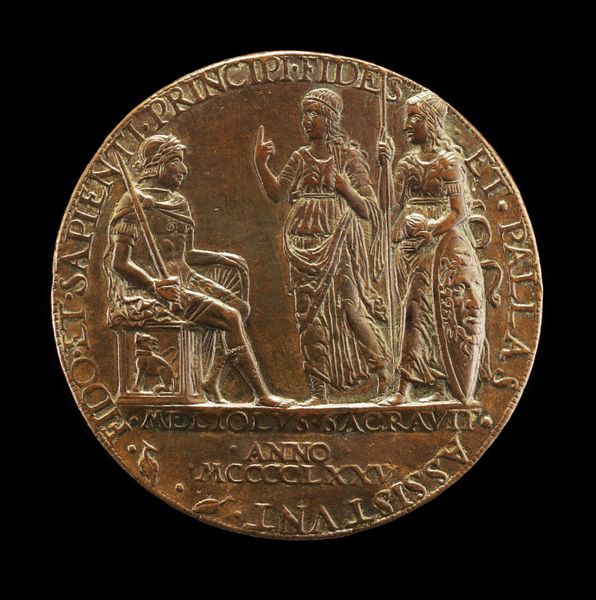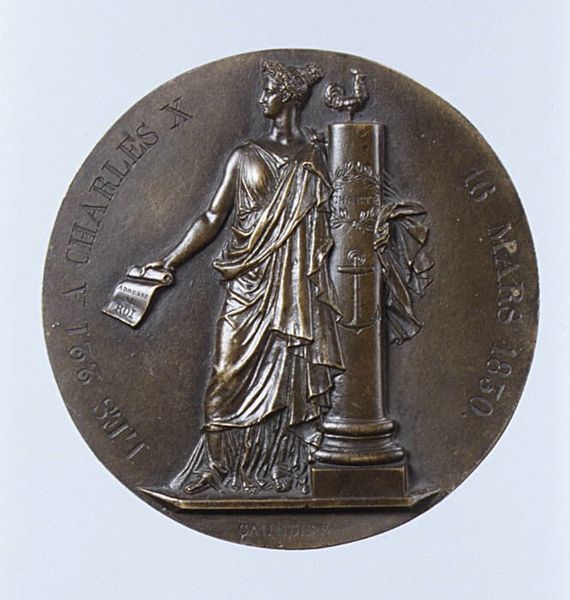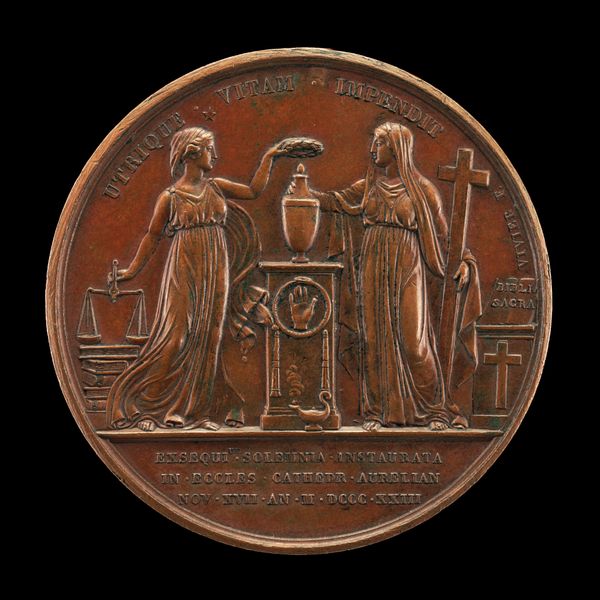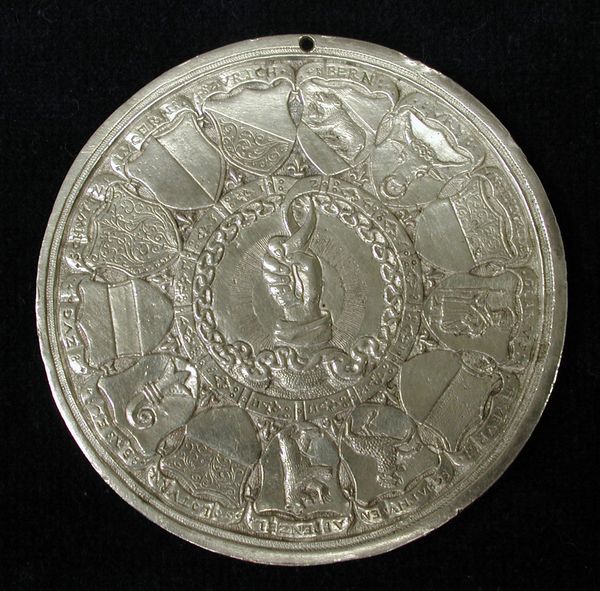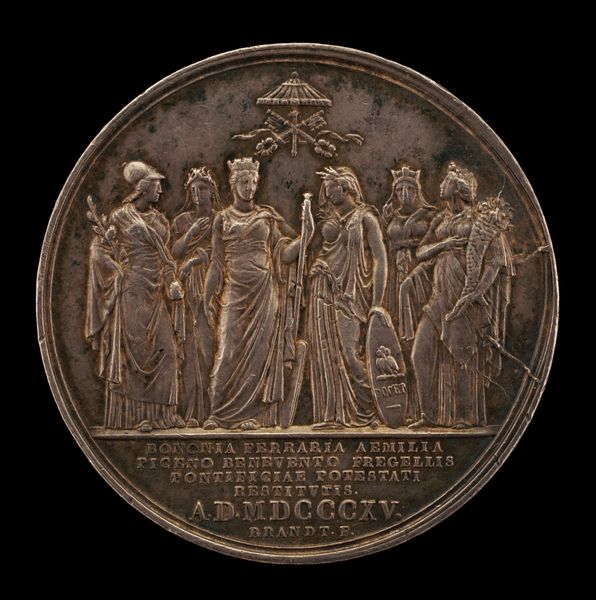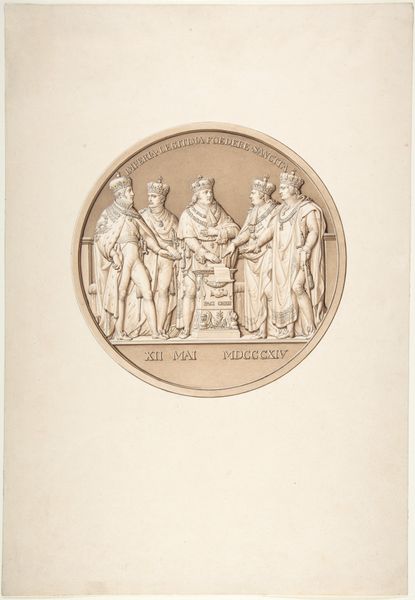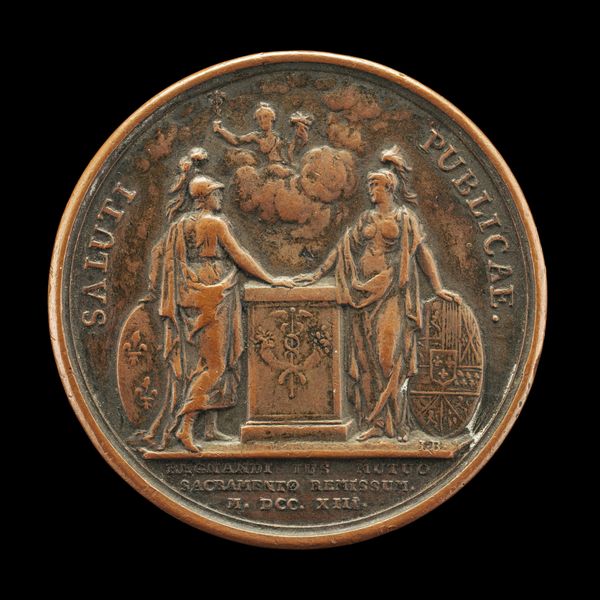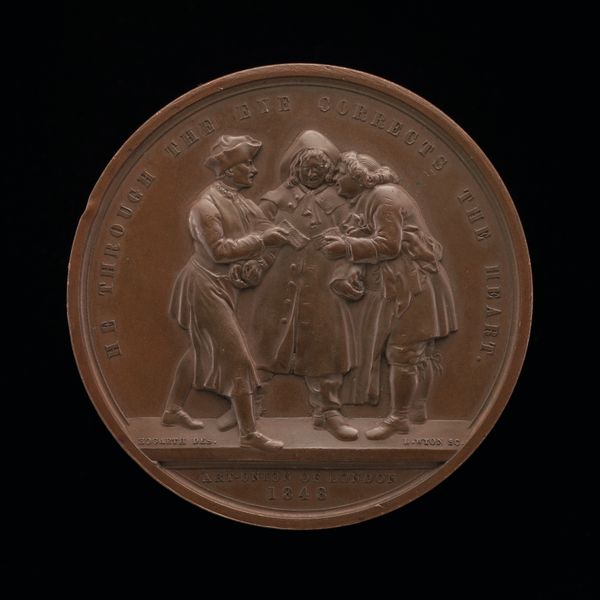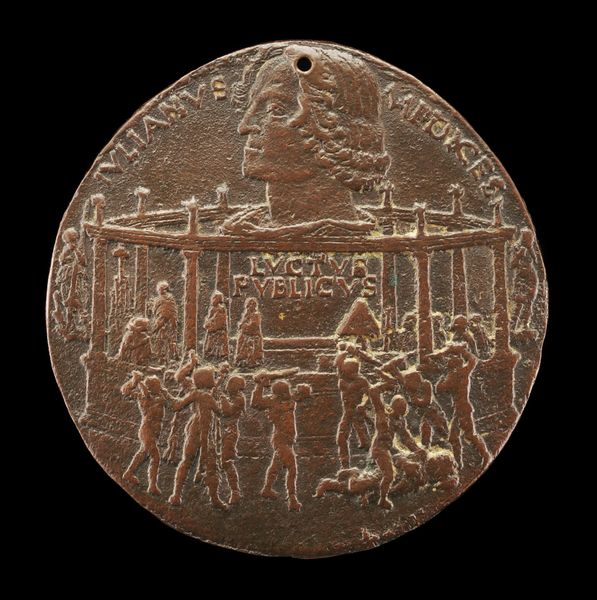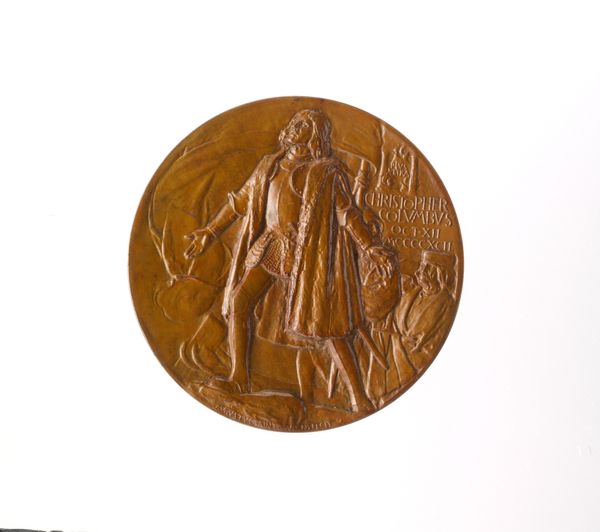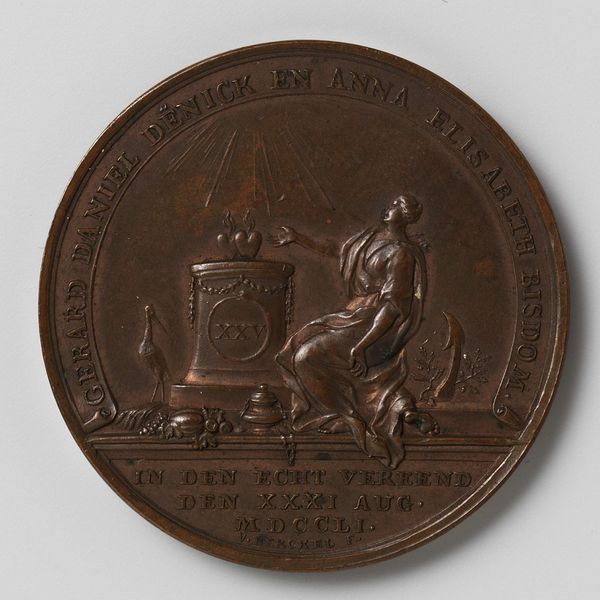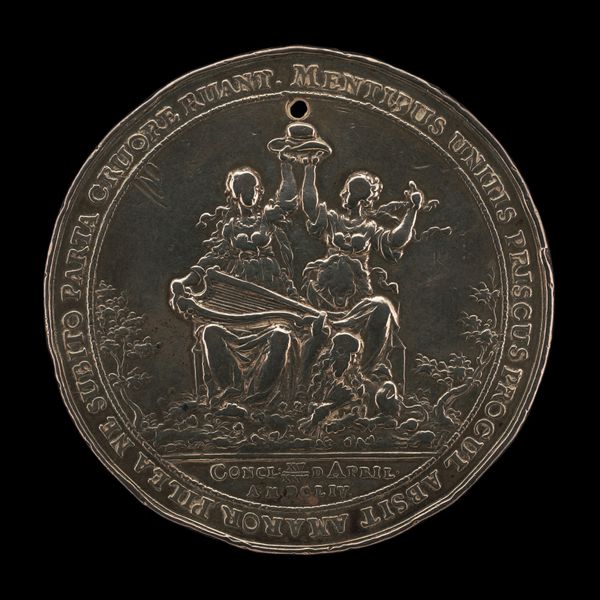
The Miraculous Rescue of Alexander III and the Imperial Family, 1888 1888
0:00
0:00
Dimensions: Diameter: 3 1/2 in. (8.9 cm)
Copyright: Public Domain
Curator: The texture draws me in immediately. It's as if the whole scene has been pressed from memory into a bronze echo. There's a stillness, but also a latent energy held within its circular frame. Editor: Indeed. We are looking at "The Miraculous Rescue of Alexander III and the Imperial Family, 1888", created by Avenir Crigorjewitsch Grilliches. The artwork, a bronze relief currently housed at the Metropolitan Museum of Art, commemorates the Borki train disaster of October 17, 1888, when the imperial train derailed. Curator: Miraculous rescue... That phrase carries weight. Bronze often suggests permanence and importance. Placing this scene in such a form clearly underscores the political importance attached to this event, as if divinely ordained. The expressions, so serious, give it a heavy, somber mood. What's really intriguing is how it captures both a moment of personal trauma and a demonstration of national strength. Editor: It's an fascinating piece of political theatre frozen in metal, a deliberate manipulation of public perception. In the aftermath of the disaster, Alexander III was hailed as a hero for allegedly holding up the roof of the damaged train to save his family. Curator: The framing reinforces that sense of heroic narrative. It's a carefully arranged portrait designed to reinforce the Tsar’s strength and familial devotion. A flattened circle acting almost like a holy icon... Do you think the deliberate use of historical precedent elevates the event beyond mere happenstance? Editor: Without a doubt. These images reinforce a certain mythology about the Romanovs at a time when their authority was increasingly being questioned. The use of the group portrait emphasizes lineage and continuation of power. The placement in relief serves to distance us, to idealize them further as figures, not real people. The inscription on the base of the medal cements that intended meaning of memorialization. Curator: But it's the quiet moments between the figures – a mother’s hand on her child, the protective stance of the Tsar, all caught within the circle – that gives it that lasting emotional pull. Despite the clear propagandistic intentions, it offers an accidental window into a specific moment in a family history as well as cultural anxieties about Russian national identity and authority at this time. Editor: An artistic snapshot, forged and refashioned to fulfill a social role. We see here how public art functions within these political frameworks. Curator: It reminds us that symbols and stories outlast their context and take on a life and meanings of their own. Editor: Leaving us to unpack and question those narratives for ourselves.
Comments
No comments
Be the first to comment and join the conversation on the ultimate creative platform.
